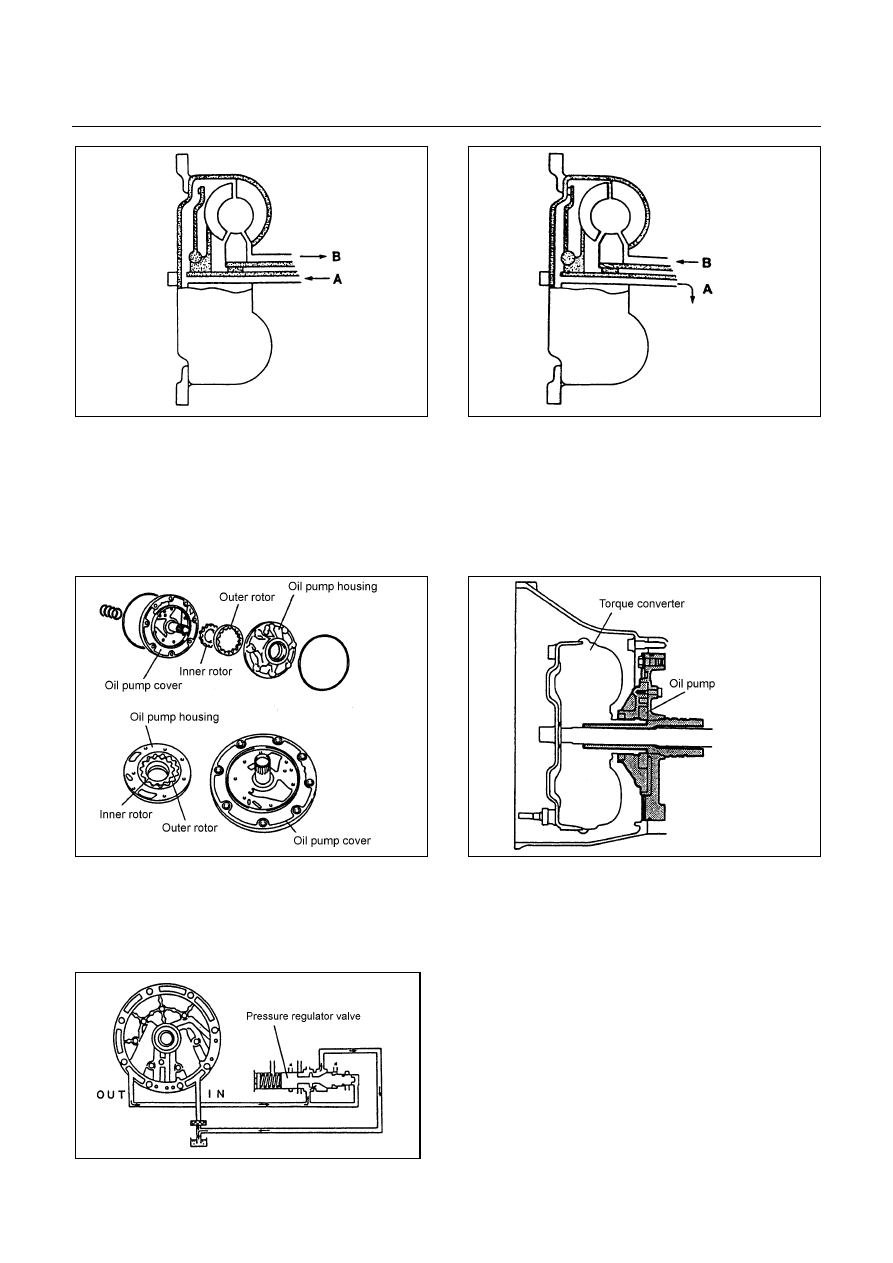Content .. 1726 1727 1728 1729 ..
Isuzu D-Max / Isuzu Rodeo (TFR/TFS). Manual - part 1728

CONSTRUCTION AND FUNCTION 7A1-9
Figure 7. Lock-up Control (Disengaged)
Figure 8. Lock-up Control (Engaged)
OIL PUMP
•
The oil pump generating oil pressure is a small-size trochoid gear type oil pump. It feeds oil to the torque
converter, lubricates the power train mechanism, and feeds the oil pressure to the oil pressure control unit
under pressure.
•
The oil pump is located behind the torque converter. Sine the inner rotor in the oil pump is fitted with the
drive sleeve of the torque converter, it works by the power from the engine.
Figure 9. Construction of Oil Pump
Figure 10. Location of Oil Pump
•
When the inner rotor in the oil pump rotates, ATF is sucked in from the oil pan, passed between the inner
rotor, outer rotor and crescent and discharged. This pressure discharged is sent to the pressure
regulator valve in the control valve and adjusted as required for operating the A/T. The flow rate under
pressure increases or decreases in proportion of the number of rotations.
Figure 11. Operation of Oil Pump